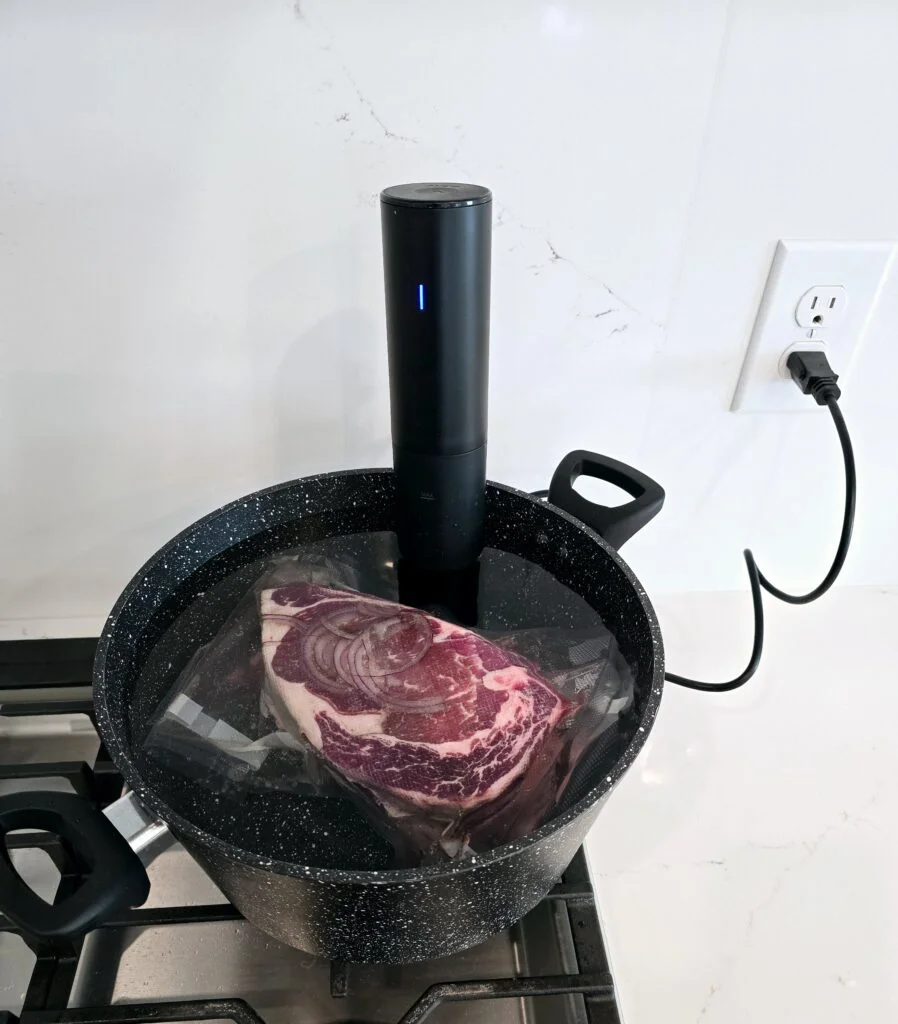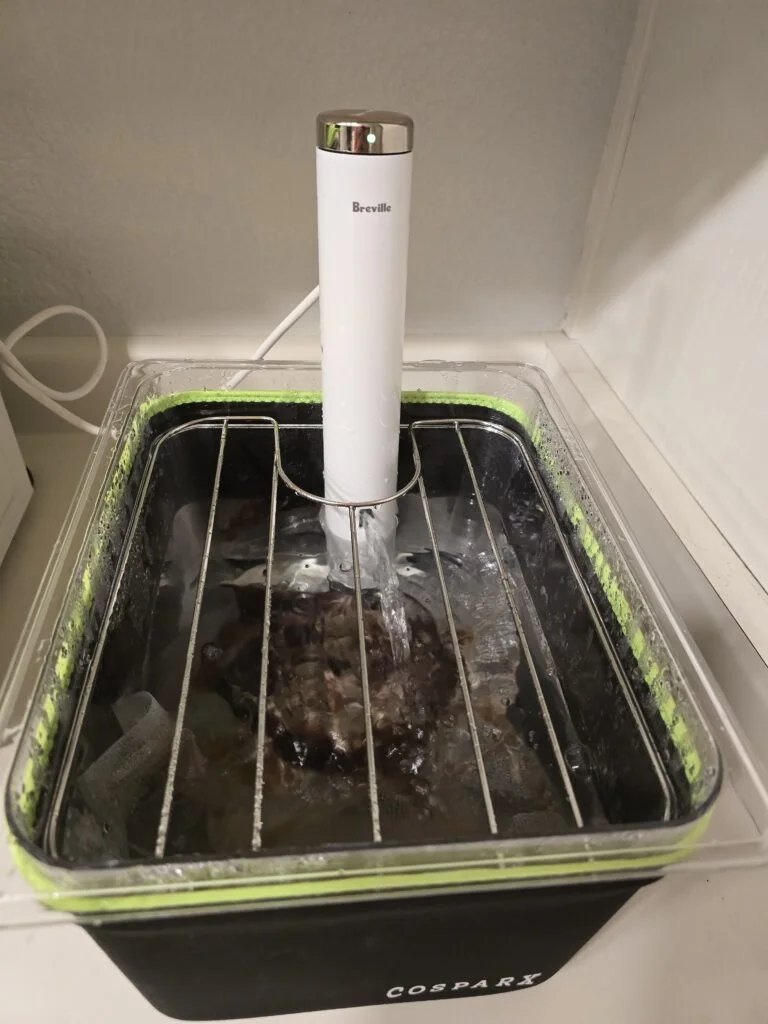Sous Vide Cooking
Sous Vide 101
Nothing beats sous vide cooking for its ease and perfection. There are recipes for every type of protein imaginable. I prefer Brevelle’s app because it’s easy to find good time/temperature recommendations.
Start Here - package the meat
Make sure your meat is in an appropriate sous vide package. Some people use Ziploc bags, but it is better to use bags designed specifically for sous vide cooking. Take a look at the links below for ideas. The food goes into the water, but the water does not touch the food.

Grass Fed Ribeye

Anova Mini Sous Vide
Next place the device and meat into pot and fill with water
Make sure the pot is big and deep enough to hold the meat, but not so big that it takes forever to heat up. You can also use a dedicated sous vide container; see the links below. Fill the pot with water, plug in the sous vide device, and allow it to boot up. I typically place a plate over the meat to keep it fully submerged. The plate was removed for the photo.
Fire it up
If you are using a unit controlled by an app, like Anova or Joule, launch the appropriate app now. Set the temperature and time according to your desired level of doneness for the meat. Hit start, and you’re all set! Some units will do all the timing for you after the water has heated; others require you to add the meat and start the timer once the water has heated.

Plate technique

Joule Sous Vide

Joule Sous Vide
Example recipes for some common meats
Some of my favorites:
- Chuck steak, fresh or frozen, Medium, 136 deg (57 ºC) for 24hrs
- Beef Ribeye 1.5 inch, frozen, medium, 140 deg (60 ºC) for 2 hrs
- Beef NY Strip 1.5 inch, frozen, med-rare, 131 deg (55 ºC) for 2 hrs
- Beef Tri Tip Roast, fresh or frozen, medium, 140 (60 ºC) for 20 hrs
- Bison Ribeye, 1 inch, frozen, medium, 133 (56 ºC) for 1.5 hrs
- Wildcaught Salmon, 1 inch, frozen, flaky, 122 (50 ºC) for 70 minutes
- Turkey Breast, fresh or frozen, ultimate moist, 131 (55 ºC) for 24 hrs
- Turkey Leg, frozen, fall of bone, 158 deg (70 ºC) for 24 hrs
The Dry Brine
Once the cooking is finished, remove the food from the bag and discard the liquid, unless it is to be used as a sauce. Place the food on a wire rack inside a baking sheet.
I use salt and black pepper on almost everything. All meats benefit from dry brining because the salt pulls in and retains moisture. I usually brine meats after sous-vide cooking to control the saltiness, except for turkey breast. The flavor of turkey breast improves when salt is added during cooking.
Maintenance
Most devices have a cap on the bottom that can be twisted off for cleaning the propeller. Depending on the water hardness, a descaling treatment may be necessary. The only other issues are keeping the apps up to date and remembering to sign the device in again if your Wi-Fi ever changes, if you have a Wi-Fi device.
ChefSteps suggests adding one teaspoon of white vinegar per quart of cooking water. There are also machine-specific videos on YouTube.
